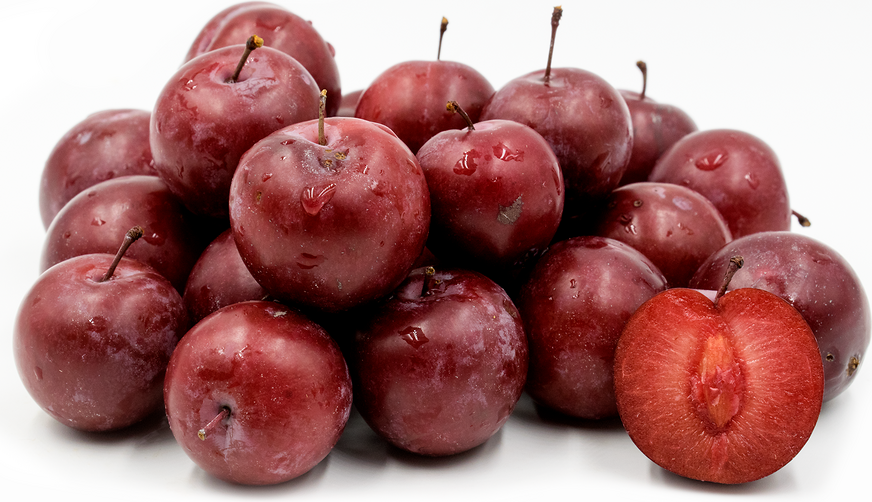


Wild Plums
Estimated Inventory, bskt : 0
Description/Taste
Wild plums grow on deciduous shrub-like trees that can reach heights as tall 10 meters. The small round fruits are approximately 2 to 3 centimeters in diameter and are a deep maroon to ruby red when fully ripe. The thick skins are tannic, bitter and considerably chewy; they are generally discarded when eaten fresh. The amber to burgundy flesh surrounds a single central stone and is moderately sweet with a high acidity.
Seasons/Availability
Wild plums are available in the summer.
Current Facts
Wild plums, sometimes called American plum, Sandhill plum, Osage plum, River plum or Sand Cherry, are botanically classified as Prunus Americana. They are seldom favored as a fresh eating plum, especially when compared to most commercial varieties, but rather provide food for wild animals and foragers. Wild plums were widely used by American Indian tribes as food and medicine. The entire tree from roots, bark and fruit may be used to treat various skin problems, cuts and wounds, as well as digestive ailments.
Nutritional Value
Wild plums contain vitamin A, beta carotene, and potassium. Most fruits in the Prunus genus also contain amygdalin and prunasin. When exposed to water, these naturally occurring chemicals become hydrocyanic acid (cyanide) which can be lethal in large doses, but in moderation stimulates respiration, improves digestion and gives a sense of well-being.
Applications
Wild plums can simply be eaten fresh as a raw snack, but are usually cooked as they are quite tart and sometimes even bitter. The plums are usually sweetened with sugar and preserved as jams, jellies, sauces, or syrups. They may also be used in recipes similarly to wild crab apples or chokecherries and baked into pies, tarts, and other sweets. Their tart nature can add balance to rich wild game demi-glace or a sweet and spicy barbecue sauce. The juices and skins from the pressed fruit may also be fermented into wine and even distilled into a sort of moonshine. Treat Wild plums as you would other tart fruits such as cranberries, rhubarb, red currants and tart cherries.
Ethnic/Cultural Info
The Teton Dakota Indians used the new sapling twigs of the Wild plum in the “waunyampi” ceremony, which is a prayer ceremony for the sick. The branches of the Wild plum were peeled and painted and bound into small bundle-like wands for the ceremony.
Geography/History
Wild plums are native to North America and can be found growing on prairies, woodlands, and riverbanks. They prefer well-drained soils in full sun to partial shade and are quite adaptable to most environments. They have a dense network of spreading roots and are often planted for erosion control, especially along embankments. Wild plums can be found growing throughout most of North America.
Recipe Ideas
Recipes that include Wild Plums. One
| Fat Free Vegan Kitchen |
|
Wild Plum Sauce |
| Liz On Food |
|
Wild Plum Barbecue Sauce |
Podcasts




